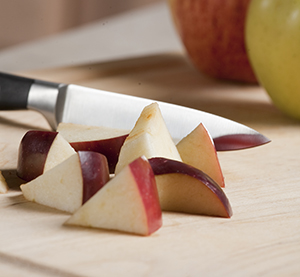Your Tracheostomy Tube: Tips for Eating and Drinking
When you first get your tracheostomy (trach) tube, you may have trouble eating and swallowing. A speech therapist or a feeding specialist will work with you. They can help you improve these skills as needed. A speech therapist is trained to help people with swallowing as well as speech.
Most people are able to go back to their usual eating habits after healing is done and their swallowing is better. Below are tips to help you eat and drink with a trach tube.
Planning meals
-
Follow your diet instructions. Follow all diet directions given by your healthcare provider or speech therapist. For example, you may be told to not have certain foods or drinks that are hard to swallow.
-
Ask how to prep your tube. If you have a cuffed tracheostomy device, ask your healthcare provider if you should deflate it before you eat. Also ask if you should suction your tube before you eat.
-
Eat plenty of fiber. This can help prevent constipation. Constipation can be a problem when you have a trach tube. And because you cannot hold your breath, it can be harder to push so you can poop. Good sources of fiber include whole-grain foods, bran, fruits, vegetables, and beans.
-
Label your food with expiration dates. You may not be able to smell when food goes bad. Your sense of smell may be affected by the tracheostomy. This is because you are mainly breathing through your neck, not your nose.
 |
| Cut food into small pieces to make swallowing easier. |
Safety when eating
Eat carefully. When eating:
If you aspirate
If you breathe food pieces into your airway (aspirate), stay calm. Try to suction the food out through your tracheostomy. If you cannot remove the food, call 911 right away.
Drinking fluids
Make sure to drink plenty of fluids. Fluids help keep your mucus thin and prevent mucus buildup. At first, you may be advised to drink thicker fluids, such as soups and blended drinks. These are safer to drink when a person has swallowing problems.
As you get used to the trach tube, you may be able to drink thinner liquids, such as water. Your healthcare provider and speech therapist will tell you how to change the types of fluids and foods for your needs.